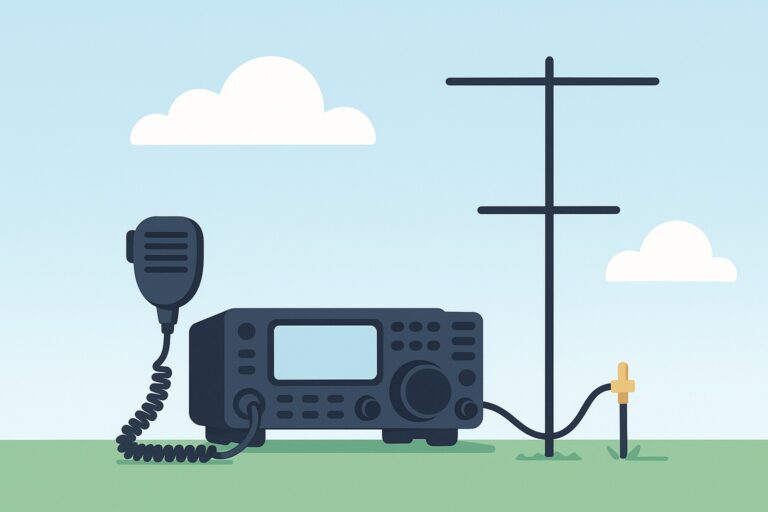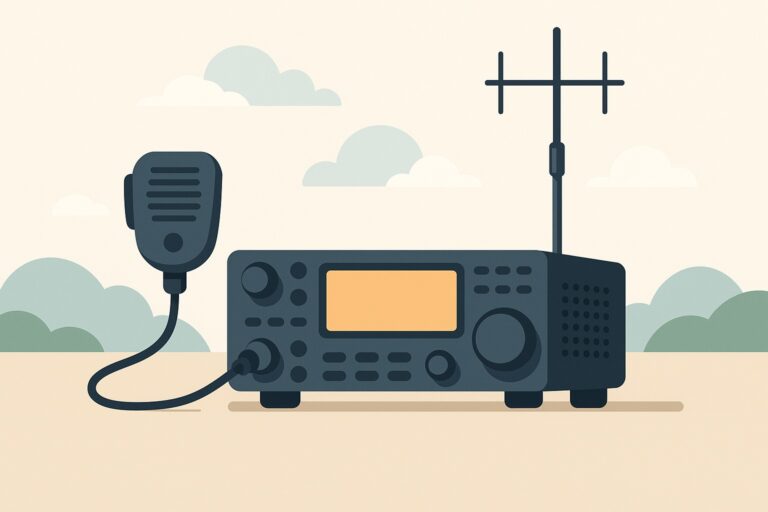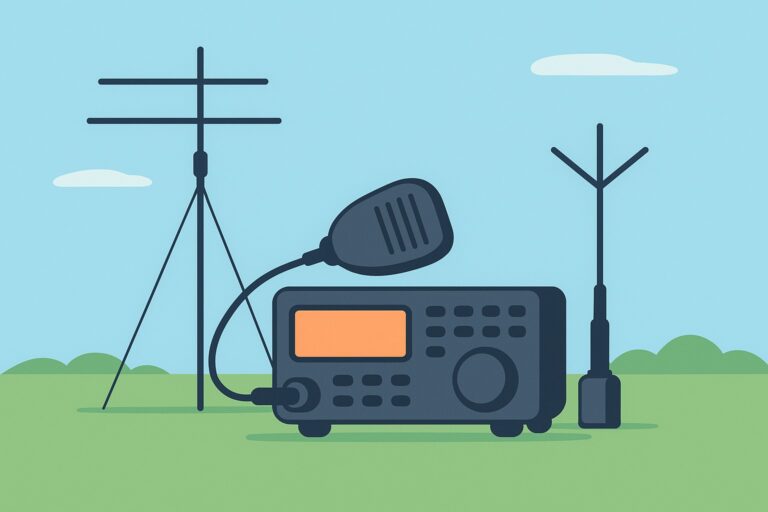Getting Started with APRS: A Practical Guide
Are you ready to dive into the exciting world of APRS? Whether you’re a curious amateur radio operator or someone looking to expand your skill set, understanding the Automatic Packet Reporting System is a rewarding step. APRS combines technology, community, and practical applications for a hands-on experience that goes far beyond voice communications. Let’s explore how APRS works, what you’ll need, and how to get started!
Getting Started with APRS: A Practical Guide
Introduction to APRS
The Automatic Packet Reporting System, commonly known as APRS, is a digital communication protocol used by amateur radio operators to transmit real-time information over radio frequencies. This system is particularly valuable for sharing data such as position reports, weather updates, messages, and telemetry, making it a cornerstone of modern ham radio activities.
APRS was developed in the late 1980s by Bob Bruninga, WB4APR, a senior research engineer at the United States Naval Academy. His vision was to create a flexible, adaptable network that could efficiently distribute information to and from mobile, portable, and fixed stations. With more than three decades of evolution, APRS has become a globally recognized standard in the amateur radio community.
The backbone of APRS lies in its ability to offer real-time tracking and data exchange. APRS can transmit a wide variety of data, including weather reports, short text messages, and telemetry data. This versatility enables everything from tracking public service events to monitoring environmental conditions. As of 2024, there are approximately 748,519 licensed amateur radio operators in the United States, and a significant number use APRS daily for both hobby and service purposes.
One of APRS’s unique features is its use of a single, shared frequency for local data exchange. APRS operates on a single shared frequency, with data being repeated locally by digipeaters for widespread local consumption. This architecture ensures that local information is accessible to everyone listening on the network, making APRS a powerful tool for community coordination and emergency response.
Essential Equipment for APRS
Getting started with APRS doesn’t require an overwhelming investment in equipment, but understanding what’s required can help you set up an effective and reliable station. Here’s a breakdown of the core components you’ll need:
- VHF/UHF Transceiver: Most APRS activity in the United States takes place on the VHF band. In the United States, the primary APRS frequency is 144.390 MHz. Many modern handheld and mobile radios support APRS natively, but even older models can be adapted for APRS use.
- Terminal Node Controller (TNC): This device acts as a bridge between your radio and computer or GPS. It encodes and decodes the digital APRS packets. Some radios have built-in TNCs, while others require an external unit.
- GPS Receiver: If you want to share your position, a GPS receiver is essential. Many APRS-enabled radios can interface directly with GPS modules, or you can use a smartphone or standalone GPS unit.
- Computer or APRS Software: For enhanced functionality, you can use APRS software on your computer, tablet, or smartphone. This software allows you to view maps, send messages, and monitor network activity.
- Antennas: A well-suited antenna—usually a quarter-wave or half-wave on VHF—ensures your signals are transmitted and received effectively. Mobile, base, and even portable whip antennas are all viable options.
When selecting equipment, consider your intended use: Will you be operating from a vehicle, home station, or out in the field? Portable operators often prioritize integrated solutions, such as handheld radios with built-in GPS and APRS, while fixed stations might opt for more robust setups with external TNCs and computers.
Don’t forget to check compatibility between your chosen hardware and software. Popular APRS software includes programs like APRSISCE/32, YAAC, and PinPoint APRS. These provide mapping and messaging functions that enhance your APRS experience. For more gear recommendations, be sure to visit https://hamradioplayground.com for expert reviews and guides.
Setting Up Your APRS Station
Once you’ve gathered your equipment, it’s time to bring your APRS station to life. Setting up may seem daunting at first, but following a step-by-step approach will have you on the air quickly. Here’s how to get started:
-
Assemble Your Hardware:
- Connect your transceiver to your TNC or ensure your radio’s APRS function is enabled.
- Attach your GPS receiver if you plan to transmit your position.
- Set up your antenna for optimal coverage and minimal obstructions.
-
Configure Your TNC and Radio:
- Enter your callsign and SSID (Secondary Station Identifier) into the TNC or radio settings.
- Set the APRS path parameters. For beginners, “WIDE1-1,WIDE2-1” is a common default for mobile stations.
- Adjust transmit power to the minimum necessary for local coverage to avoid network congestion.
-
Install and Set Up APRS Software:
- Choose software compatible with your hardware and operating system.
- Input your station information, including location, beacon text, and any relevant status messages.
- Test your setup by sending a beacon and verifying that it is received by local digipeaters or visible on APRS maps.
Most APRS setups are plug-and-play, but you may encounter some troubleshooting along the way. Double-check cable connections, audio levels, and radio settings if you experience issues. Many local ham radio clubs offer support and advice for new APRS users, so don’t hesitate to reach out for help.
Finally, remember to operate on the correct frequency for your region. In the U.S., 144.390 MHz is the standard for APRS, but this may vary internationally. Always check local band plans and regulations before transmitting.
Operating APRS: Best Practices
Operating efficiently and courteously on APRS helps maintain a robust and useful network for everyone. Here are some best practices to keep in mind as you begin your APRS journey:
-
Use Appropriate Beacon Intervals:
Set your position beacon interval to a reasonable value—typically every 2 to 5 minutes when mobile, or longer when stationary. This reduces unnecessary network traffic and ensures important data isn’t lost in a flood of packets. -
Keep Transmit Power in Check:
Use the lowest power required to reach a digipeater. Excessive power can cause interference and unnecessary congestion, especially in densely populated areas. -
Follow Path Recommendations:
Use recommended path settings like “WIDE1-1,WIDE2-1” for mobiles to ensure your packets are relayed efficiently without overwhelming the network. Avoid using excessive hops. -
Monitor Before Transmitting:
Listen to the APRS frequency before transmitting, especially if you’re running a high-power or fixed station. This helps prevent packet collisions and interference. -
Respect Local Practices:
Every region may have slightly different customs regarding APRS operation. Engage with local operators or clubs to learn about best practices in your area. -
Utilize Messaging Thoughtfully:
Short text messages are a great way to communicate on APRS, but keep them concise and relevant to minimize network load.
As your experience grows, you might start experimenting with advanced features such as weather stations, telemetry, or even remote control via APRS messaging. Collaboration and courteous operation keep the APRS network healthy and enjoyable for all users.
Remember, APRS is a shared resource. Your transmissions are public and intended for community benefit, so always operate with integrity and awareness of others on the frequency.
APRS Applications and Use Cases
The real magic of APRS lies in its flexibility and the wide range of practical applications it supports. Whether you’re interested in public service, experimentation, or just having fun, APRS has something to offer every ham radio operator.
-
Real-Time Tracking:
APRS allows you to track vehicles, bicycles, balloons, and even hikers in real time. This is particularly useful for organizing events or supporting search and rescue operations. -
Weather Reporting:
Many APRS stations are equipped with weather sensors, automatically broadcasting local conditions. These reports are valuable to both amateur operators and public weather services. -
Emergency Communications:
During disasters or public events, APRS becomes an invaluable tool for situational awareness, resource coordination, and message relay when traditional communication networks are down. -
Short Messaging:
APRS enables sending and receiving brief text messages—think SMS for ham radio. This feature is handy for coordinating with friends, sharing status updates, or relaying information during emergencies. -
Telemetry and Remote Sensing:
APRS supports telemetry data, making it ideal for remote monitoring projects such as environmental sensors, weather balloons, or experimental payloads.
APRS’s ability to adapt to different needs is what keeps it popular decades after its inception. From supporting large-scale marathon events to simple one-on-one communication, APRS is a toolkit limited only by your creativity and imagination.
If you’re keen to learn more or see real-world examples, the resources at https://hamradioplayground.com provide in-depth guides, project ideas, and the latest news from the APRS community. Dive in, experiment with new features, and discover all the ways APRS can enhance your amateur radio experience!







